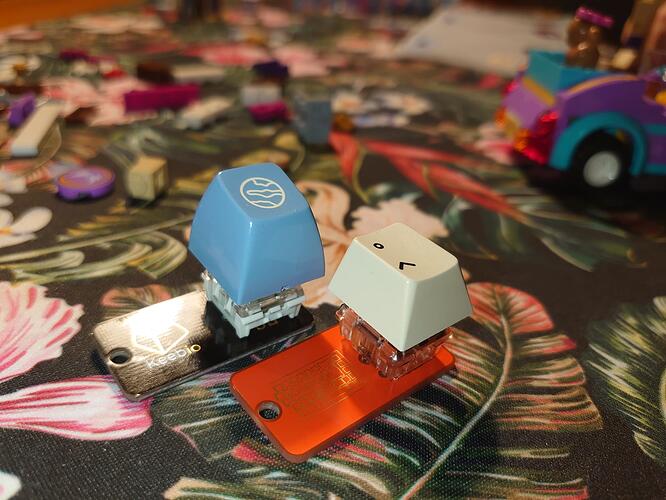Prolly not tbh. I’ve recently started getting into low profile switches myself (going down the weird 40% and under split route) so I see a lot of choc switches in my future.
I started one of the threads about Mute Jades… I’m highly disappointed with them. When you actually try to use them it’s almost like the tactility disappears. They might as well be MX Brown’s. Which is weird because they don’t feel bad when tested individually.
I have both of those here to test at some point. I also have Box White and Box Pink to try. IMO - I think Pale Blue or Navies have a chance at becoming daily drivers for me. Box Whites and box Pinks not so much. I’m a pretty heavy hand.
Chocs are interesting to me, but I haven’t researched them. I’m not certain if they will fit in a PCB design for MX style switches.
Layout wise: I can’t get used to too many layers, so something like a 40% is not someplace I’d be able to go. I’m on this slightly odd 71-key layout… It’s larger than a 60% or a 65%, but more compact than a TKL and still has all the keys I need on the primary layer.
I believe there’s a slight difference, you would need to design a PCB that can accept both choc and mx style switches. Though one of the cooler (IMO) things about Chocs is the spacing between keys is less than on mx style keyboards, so if you get a PCB that’s both choc switch compatible & choc spaced, you can get more keyboard in the same footprint.
We’ll see though how they are. I went with linears since that’s my preference for typing personally, and I went with really light springs too, like 25g, which is a far cry away from the 55g mx linears I currently daily. I’ve seen people with 12g choc switches, it’s like wow.
That’s what I thought…from glancing at them it looked they there were a little larger than standard MX, like 1-2mm larger… So I don’t know that it’s possible to do both MX and Choc on the same PCB, or if you do there’s likely to be some tradeoff.
25g sounds like a good weight… I was using a Logitech MX Keys before I started back into mechanicals, and I think the weight on those is ~30-35g. I can’t see 12g - I’d be triggering switches unintentionally all the time.
I think the weight that you use for a low profile switch can be quite different from something like an MX or ALPS style switch. I don’t understand why, but with the pow profile switches it seems like lighter weights are actually better, where with MX switches a higher weight is better… That seems counter-intuitive to me, but that’s my experience.
I don’t know how much truth there is to this, but to me, it feels like when you shorten the travel the weight ramps up so fast that the switch feels heavier than it really is. My chocs reds are 35g in weight and they feel MUCH heavier than some browns I had in an old keyboard.
And to me even my Gateron box inks (pink) feel just about as heavy as my creams and they are 10g apart in weight difference.
I’ve seen a Choc and MX PCB, can’t remember if it was a render but the Choc sockets and the MX sockets were sitting polar to each other, one is north while the other was south facing.
Navies are really something else. You wont be disappointed. They are maybe a BIT too much for some people but if you are heavy handed (as i am - 80g bottom out is what I usually run) you’ll love them.
That’s actually the one thing that might spell doom for Navies for me. The Mute Jades bottom out is 82g, and I found them to be fatiguing.
That could be…the MX Keys did have a very solid bottom out, so the force curve did ramp quite a bit. So, that makes sense…
That makes sense for handling the contacts… And if a board can be designed for both, then it’s likely the switch footprint isn’t all that much different. Interesting.
Keebio has a nifty little keychain that shows the difference between choc/mx/alps pin placement.
oo this is cool! Cursory glance shows it even supports both Choc V1 and V2 switches (the V2 has a thicker pipe thing for the stem to go into on the downstroke, and instead of the 5 pin configuration it’s got a 4 pin one, with the 4th pin being positioned on the opposite corner to the main connection pins. More info on the difference between V1 and V2 can be found here.

